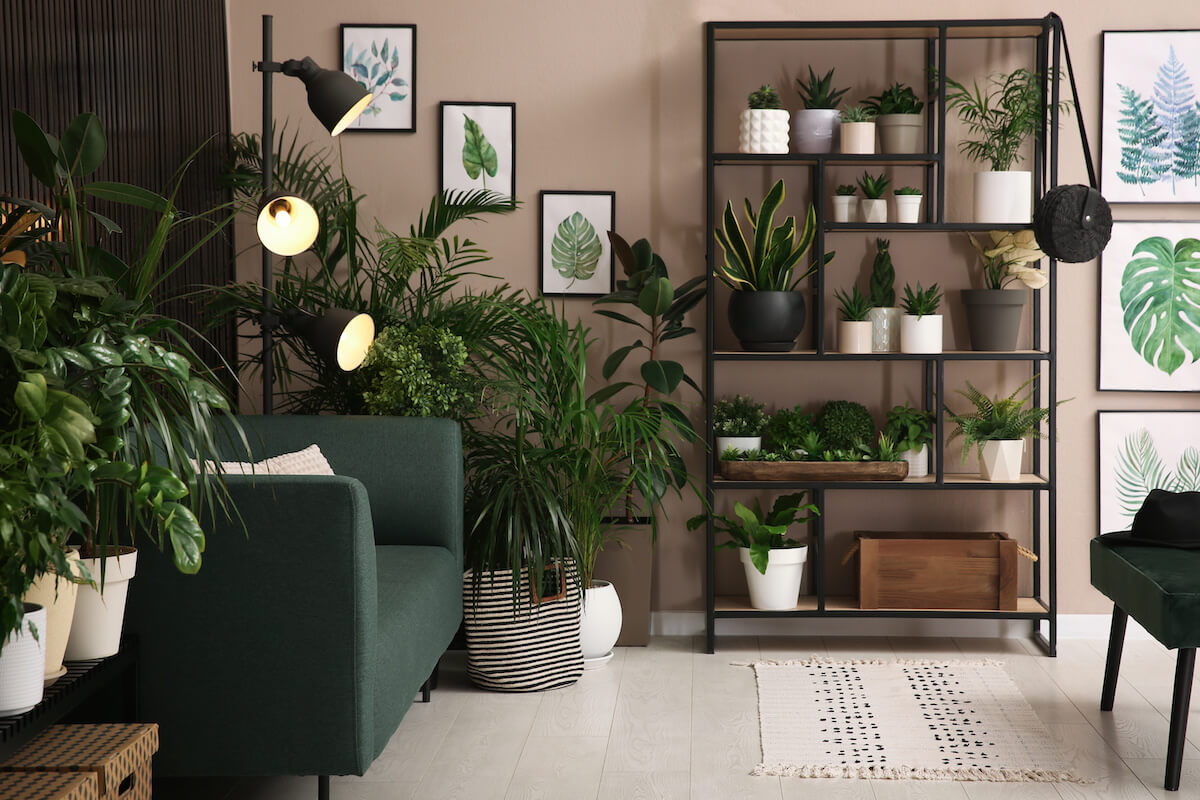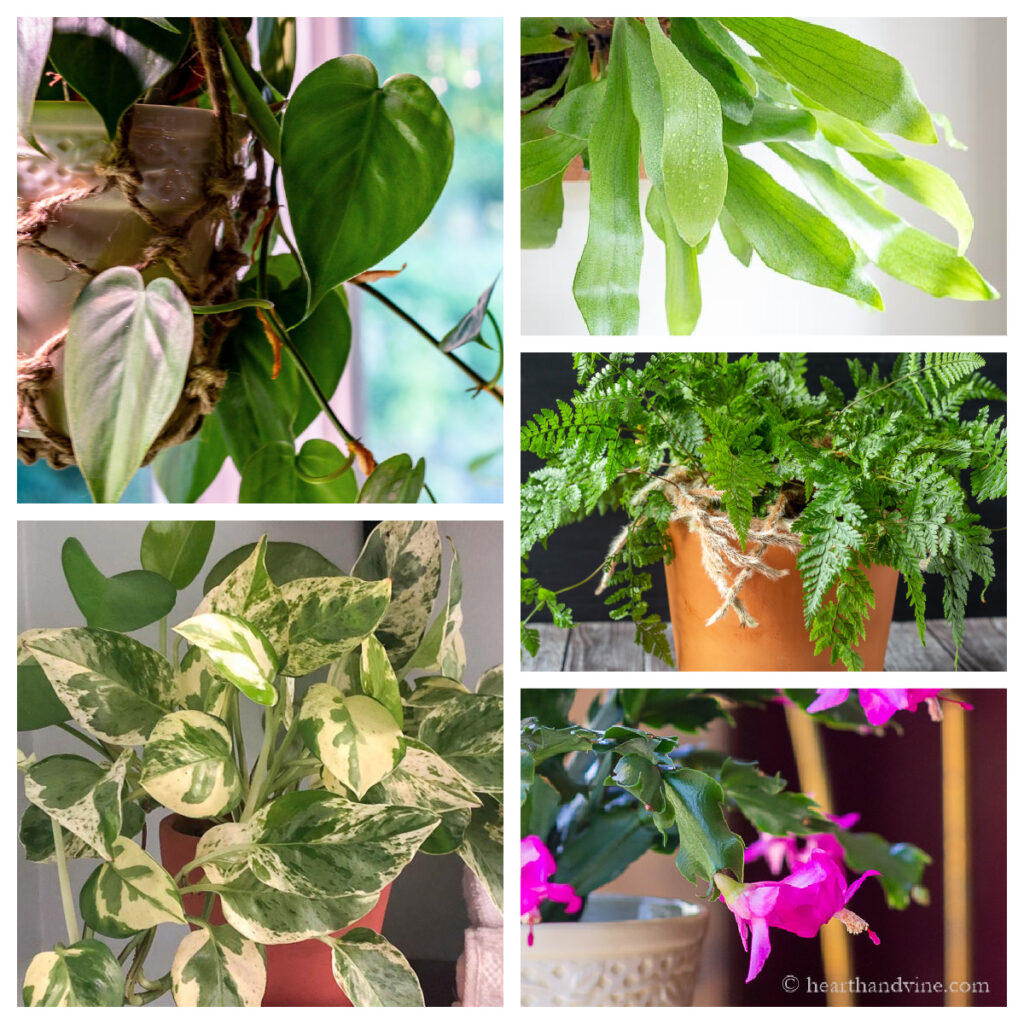Top 10 Best Low-Light Indoor Plants for Dark Rooms and Apartments
Top 10 Best Low-Light Indoor Plants for Dark Rooms and Apartments
Blog Article
Uncover the Keys of Low-Light Indoor Plants and How They Boost Your Environment
Low-light interior plants have actually garnered increasing attention for their one-of-a-kind capacity to boost both aesthetic charm and environmental high quality within homes and offices. These durable species, consisting of the Serpent Plant and Peace Lily, not just grow in difficult lighting problems however also play a pivotal duty in air filtration and emotional health. Recognizing the certain benefits and treatment demands of these plants can substantially impact your home. As we discover the ins and outs of their advantages, you might find understandings that can change your surroundings in unanticipated methods.
Advantages of Low-Light Indoor Plants
Although many individuals assume that indoor plants need bountiful sunlight to flourish, low-light interior plants supply a wide range of advantages that make them excellent for different settings. Among the primary advantages is their versatility; they can prosper in spaces with restricted natural light, such as workplaces, cellars, or areas with tiny home windows. This feature allows individuals to enhance their surroundings with plant, adding to boosted aesthetics without the need for extensive lighting modifications.
Additionally, low-light interior plants can substantially boost interior air high quality by filtering system dangerous contaminants and launching oxygen, making living areas healthier. Research study has shown that certain varieties can absorb contaminants, therefore promoting a cleaner atmosphere. Additionally, they can boost psychological wellness by minimizing anxiety and boosting efficiency. The presence of plants has actually been linked to greater sensations of peace and emphasis.
In addition, low-light plants commonly require much less maintenance than their sun-loving equivalents, making them perfect for active people or those new to horticulture. Their durability permits them to grow with very little treatment, thus giving a gratifying experience for plant fanatics and novices alike. In recap, low-light interior plants serve both aesthetic and practical objectives, making them valuable additions to any kind of space.
Top Low-Light Plant Ranges
Low-light interior plants come in a range of types, each offering unique qualities and advantages matched for dim atmospheres. Among one of the most preferred varieties is the Snake Plant (Sansevieria), understood for its building leaves and air-purifying capacities. This resistant plant flourishes on forget and can tolerate a vast array of light conditions.
One more exceptional selection is the ZZ Plant (Zamioculcas zamiifolia), which includes shiny, dark environment-friendly leaves and is highly drought-tolerant. Its adaptability makes it a preferred for offices and homes with restricted sunlight.
The Pothos (Epipremnum aureum) is likewise a top competitor, with its tracking vines and heart-shaped leaves - Best low-light indoor plants. This versatile plant can be educated to climb or cascade, adding visual interest to any space

Care Tips for Low-Light Plants
Looking after low-light indoor plants needs a nuanced understanding of their details requirements to make sure optimal development and vitality. Initially, it is vital to pick the best potting mix, as a well-draining dirt is vital to top article avoid origin rot. A blend made for houseplants, usually consisting of peat moss and perlite, works well for a lot of low-light varieties.
Watering is an additional key facet of care. Low-light plants typically call for less regular watering contrasted to their sun-loving counterparts. It is suggested to check the top inch of dirt; if it really feels dry, it's time to water. Overwatering can cause complications such as mold and origin decay.
Fertilization ought to be come close to with caution. Throughout the expanding period, a diluted liquid plant food can be applied monthly, yet in wintertime months, numerous low-light plants enter inactivity and call for little to no fertilization.
Last but not least, it's important to periodically clean up the leaves to get rid of dirt, permitting better light absorption. By adhering to these treatment tips, you can cultivate a flourishing atmosphere for your low-light indoor plants, improving both their appearance and durability.
Enhancing Air High Quality With Plants
Indoor plants play a considerable function in improving air high quality within homes and workplace. Through the process of photosynthesis, these plants take in co2 and release oxygen, adding to a healthier environment. In addition, particular low-light indoor plants have the capacity to filter harmful pollutants, such as benzene, trichloroethylene, and formaldehyde, which are generally discovered in indoor atmospheres.

Moreover, the visibility of interior plants can enhance humidity degrees, which helps relieve dry skin and respiratory system issues, additionally improving general health. This ability to improve air top quality not only advertises physical health however also supports psychological health.
Incorporating low-light interior plants right into your living and working rooms can result in an extra vibrant and stimulating atmosphere (Best low-light indoor plants). Buying these natural air purifiers is a simple yet effective method for boosting Look At This interior air quality and promoting a much healthier way of living
Developing a Serene Indoor Space
The combination of plants into living areas not just improves air top quality yet additionally adds to a tranquil atmosphere. Low-light indoor plants, such as snake plants and pothos, are particularly effective in creating a serene environment, as they thrive in conditions that might or else be unwelcoming for various other plant. Their rich foliage offers a calming aesthetic, reducing stress and anxiety and advertising leisure.
Incorporating these plants into your home or workplace can stimulate a feeling of peace and well-being. Tactically positioning them in locations where you invest considerable time, such as living work spaces or rooms, allows for an immersive experience with nature, which has actually been shown to improve state of mind and cognitive feature.
Additionally, the gentle movement of fallen leaves in action to airflow can create a vibrant visual element that boosts the general ambiance. Take into consideration making use of a range of plant heights and appearances pop over to this web-site to include depth and passion to your area. With thoughtful placement and treatment, low-light indoor plants can change any location into a calm haven, fostering not just aesthetic complete satisfaction yet emotional and likewise psychological wellness.

Conclusion
Including low-light indoor plants into numerous environments returns significant benefits, consisting of improved air high quality and boosted aesthetic charm. These durable species not just grow in minimal light however additionally contribute to a soothing ambience, promoting mental and emotional wellness. By selecting appropriate ranges and applying proper care methods, people can efficiently cultivate a peaceful indoor area that cultivates health and performance. The transformative power of low-light plants underscores their value in improving both work and domestic settings.
Although lots of people think that indoor plants call for abundant sunshine to flourish, low-light interior plants provide a multitude of benefits that make them ideal for numerous environments.Additionally, low-light indoor plants can substantially improve interior air top quality by filtering harmful toxic substances and releasing oxygen, making living spaces healthier. In addition, certain low-light indoor plants have the ability to filter dangerous toxins, such as formaldehyde, benzene, and trichloroethylene, which are frequently located in indoor environments.
Low-light indoor plants, such as serpent plants and pothos, are specifically effective in producing a tranquil environment, as they flourish in conditions that may or else be unwelcoming for various other plant.Incorporating low-light indoor plants into various atmospheres yields considerable advantages, consisting of boosted air top quality and boosted visual allure.
Report this page